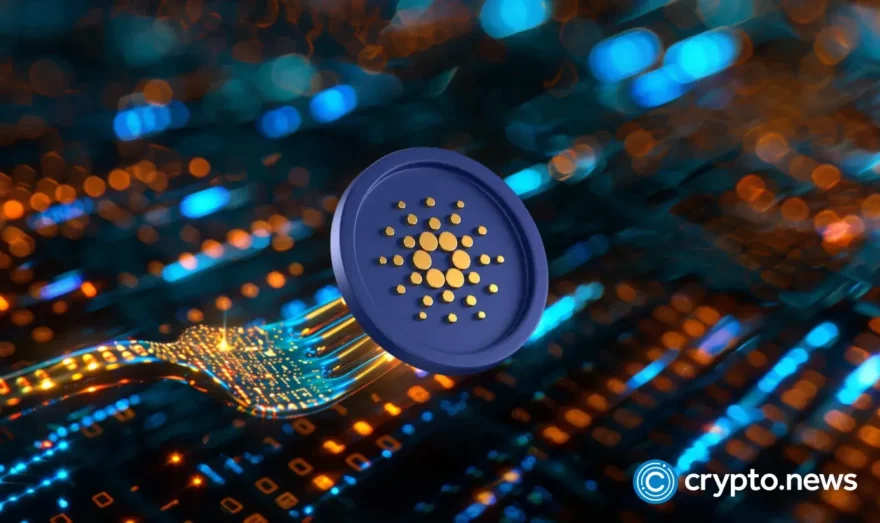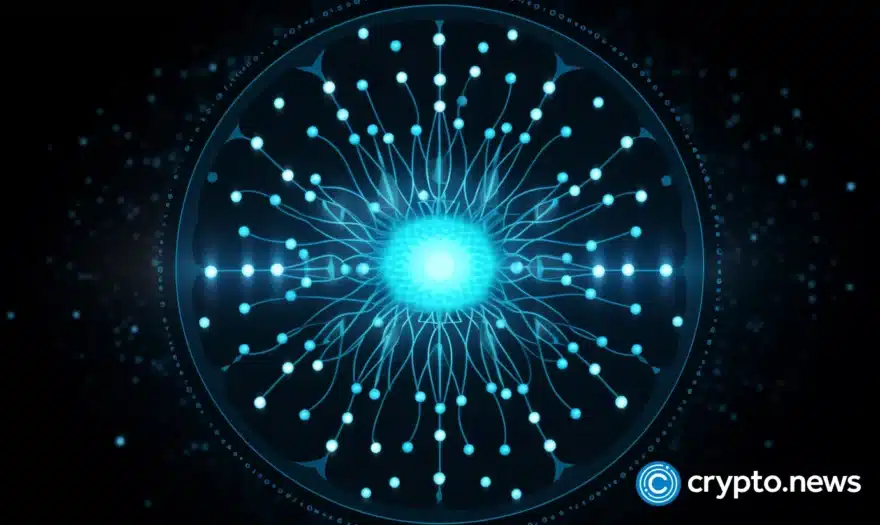Cardano Price
Cardano to USD price Chart
Cardano price today
The current price of Cardano (ADA) is $0.710283, as of Jul 12, 2025. Over the last 24 hours, the price has moved by 4.91%, with a change of 0.56% in the past hour. For longer-term performance, the price has varied by 23.27% over the last 7 days and by 2.46% in the past month.
Market update
The 24-hour trading volume is $2,591,401,502, and price fluctuations during this time have ranged between a low of $0.67089 and a high of $0.77209. The all-time high for Cardano was $3.09 on Sep 2, 2021, while the all-time low was $0.0192528 on Mar 13, 2020.
Market ranking and capitalization
Cardano holds a market rank of #11, with a market capitalization of $25,688,462,155. Its fully diluted valuation stands at $31,985,572,295.
Supply overview
The circulating supply of Cardano is $36,140,694,507, out of a total supply of $45,000,000,000 and a maximum supply of $45,000,000,000.
Price changes and historical data
Over the last year, Cardano has experienced a price shift of 79.97%, while over the last 30 days, the price has seen a 2.46% change. The price change over the last 200 days stands at -23.75%.
These metrics are updated every minute to ensure real-time accuracy, helping you stay informed about the latest trends and market movements for Cardano.
Cardano History
What is Cardano (ADA)?
Cardano (ADA) is a decentralized proof-of-stake (PoS) blockchain developed to be a more effective option to proof-of-work (PoW) networks such as Bitcoin. The blockchain’s native cryptocurrency ADA is named after the famed English mathematician Ada Lovelace often recognized as one of the first computer programmers.
For a long time, Cardano styled itself as an improved Ethereum (ETH) version, leading many to believe it would eventually surpass the older blockchain in innovation and adoption. However, ETH still ranks higher on market cap listings.
Who are the founders of ADA?
Charles Hoskinson, a co-founder of the Ethereum network, created ADA. He studied analytic number theory at the Metropolitan State University of Denver and the University of Colorado Boulder.
Hoskinson was CEO at Ethereum until 2014 when he left due to disagreements with Vitalik Buterin and the Ethereum team over the project’s direction. In 2015, he co-founded IOHK (Input Output Hong Kong) with Jeremy Wood. This company launched the Cardano blockchain in 2017.
What is Cardano used for?
Cardano has a dual purpose as a blockchain and a cryptocurrency. As a blockchain, it is designed to run decentralized apps through smart contracts. It means that others can build their projects on top of Cardano, which is more accessible than developing their blockchain from scratch.
As a cryptocurrency, cardano is used to secure the network and facilitate peer-to-peer transactions within and outside its ecosystem.
Cardano has a payment gateway, ADA Pay, which allows people to buy goods using ADA. Hundreds of businesses accept ADA as payment, including Alternative Airlines, Ai Contently, and Playfina.
What makes ADA unique?
ADA has carved out a niche among PoS blockchains with its signature Ouroboros protocol, designed to be energy-efficient and less susceptible to attacks.
Cardano splits transaction and calculation functions into two layers: the Cardano Settlement Layer (CSL) and the Cardano Computation Layer (CCL), which it claims increases flexibility and interoperability while boosting security and performance.
On top of that, the Cardano blockchain enables the creation of native tokens similar to ETH tokens, including NFTs or stablecoins like USD Coin (USDC). But unlike Ethereum-based tokens, the native Cardano cryptos use the same architecture as the ADA coin, theoretically making them more secure and less expensive.
Who owns the most cardano (ADA)?
When the network launched, a significant portion of tokens was allocated to IOHK as the principal developer behind the Cardano project, to EMURGO, the commercial and venture arm of Cardano, for its role in helping to develop the Cardano blockchain, and to the Cardano Foundation. A portion of coins was given to the project’s founders, who are believed to hold the biggest amount of ADA.
How does the Cardano network function?
The Cardano infrastructure consists of a collection of nodes that communicate with each other to maintain the distributed ledger. These nodes validate blocks, add them to the chain, and distribute transactions.
The network is split into two layers, the Cardano Settlement Layer (CSL) and the Cardano Computation Layer (CCL). The transference of value and the maintenance of the Cardano ledger happen on the CSL, while the CCL handles smart contract executions and interactions with external data sources.
Besides, Cardano uses the Ouroboros consensus mechanism to divide time into epochs and slots and to elect slot leaders to produce new blocks.
The network also leverages a unique governance system called Voltaire, through which stakeholders can make protocol-changing proposals and vote for them.
What is Cardano’s Alonzo upgrade?
The Alonzo upgrade, released on September 12, 2021, introduced support for non-fungible tokens (NFTs), smart contracts, and decentralized exchanges (DEX) on Cardano.
Alonzo was meant to give Cardano similar capabilities to Ethereum and allow it to gain a more significant foothold in the smart contract space, which has become a pillar of the decentralized finance (DeFi) sector.
The upgrade allowed anyone to create and deploy smart contracts on Cardano, paving the way for native consumer-ready decentralized apps (DApps).
Alonzo was implemented through a hard fork combinator (HFC) event and was slowly integrated into the network via several color-coded stages.
What is Cardano’s Vasil hard fork?
Since achieving its all-time high (ATH) in September 2021, the ADA coin, regularly included in the top 10 list of cryptocurrencies by market cap, has been in a protracted phase of price consolidation.
Nonetheless, after the COVID-19 outbreak, the Cardano price surged more than tenfold, illustrating the tremendous interest among developers in creating decentralized apps (DApps) for the network’s growing user base.
In response, Cardano announced its Vasil hard fork to improve transaction speeds and increase the blockchain’s scalability.
The hard fork, executed in September 2022, introduced new functionalities to the blockchain and is often regarded by crypto watchers as the second-biggest event in the crypto world after the Ethereum Merge.
The upgrade included three significant Cardano Improvement Proposals (CIPs), namely CIP-31, CIP-32, and CIP-33, which added new features such as a unique reference input mechanism, the addition of an on-chain storage facility, and a lighter programming script.
But despite all the technological advancements, the ADA price failed to exhibit much upward momentum following the Vasil hard fork.
How many Cardano coins are in circulation?
Only 45 billion ADA coins are available, of which slightly more than 35 billion are currently in use. However, since new coins are produced and dispersed through staking rewards and other processes, the total supply in circulation evolves and plays a part in either pumping or deflating the Cardano crypto price.
How is the Cardano network secured?
As mentioned earlier, the PoS consensus protocol known as Ouroboros protects the Cardano network. Using this protocol, the network’s stake pools may approve transactions and build new blocks.
According to its developers, Ouroboros is made to be resilient to attacks, scalable, and energy-efficient.
The protocol relies on a group of validators, known as slot leaders, who are chosen randomly and are in charge of adding new blocks to the ledger. Ouroboros then rewards honest behavior and deters network attacks by employing validator stakes as a security indicator.
How to buy cardano (ADA)
To buy ADA, you’ll need to use a crypto exchange like Coinbase or Binance. Before selecting an exchange, be aware of the costs and possible payment methods.
Once you have your coins, it’s better to keep them secure in a full-node wallet like Daedalus or a browser-based one like Yoroi.
How to stake cardano (ADA)
Staking ADA is a way of earning rewards by participating in the Cardano network and supporting its security and decentralization.
Staking always involves risks, but if you decide to do it, there are several avenues available for staking ADA. You could use a crypto exchange, a compatible wallet, or run your stake pool.
If you choose to use a crypto exchange, you’ll need to create an account with the exchange, after which you can buy or transfer ADA tokens to the exchange wallet. Next, navigate to the exchange’s staking section, select Cardano, choose a staking duration, and enter the amount of ADA you wish to stake.
If you have the technical skills, you may run your stake pool. You will need to set up and maintain a server, configure firewall and security settings, and monitor the performance of your nodes.
You will also need to either own some ADA or be able to attract delegators who can trust you with their coins.
What is special about Cardano?
Cardano distinguishes itself from other blockchains in several ways. It’s one of the few networks that engage extensively with peer-reviewed academic research, ensuring that its codes are scrutinized and verified by some of the top experts in the field.
The blockchain also uses a layered architecture that divides its processing and settlement tasks so that one does not affect the speed of the other.
Another distinguishing feature is Cardano’s distinctive “Ouroboros” consensus algorithm, which enables quicker transaction confirmation and block production.
Finally, the Cardano blockchain is administered in a special way too. It is run by the Cardano Foundation, IOHK, and EMURGO, three independent entities, each in charge of different facets of the network: management, research, and commercialization.
How does Cardano ensure scalability?
Cardano ensures scalability through the following mechanisms:
It uses a layered blockchain architecture that allows its settlement and computation functions to work more efficiently without impacting each other or the broader network.
Additionally, it uses the distinct layer-2 protocol known as Hydra, which increases the number of off-chain ledgers or heads and boosts Cardano’s overall scalability by handling more transactions per second. The network can perform transactions concurrently and increase processing capacity by using each Hydra head as a separate parallel network. It can expand its capacity with Hydra flexibly and effectively because the number of heads can be adjusted in response to transactional traffic.
Finally, Cardano allows certain transactions and calculations to be offloaded to independent sidechains that run concurrently with the main network. Sidechains are autonomous blockchains that run alongside the main Cardano network, allowing for the development of decentralized and scalable apps and services that can connect to the main network while running independently.
What is the difference between Cardano’s mainnet and testnet?
The mainnet is the live and operational Cardano network where real transactions occur. Users can transfer ADA, execute smart contracts, and participate in the blockchain’s governance and consensus processes.
On the other hand, the testnet serves as a sandbox environment where developers can identify and fix bugs and vulnerabilities and ensure that new features are stable, secure, and ready for deployment. It also allows users to explore and understand the workings and capabilities of Cardano without using real funds.
Does Cardano support smart contracts?
Cardano supports smart contract functionality on its computation layer (CCL).
Are there any partnerships or collaborations involving Cardano?
Yes, Cardano has several partnerships and collaborations with various entities, including environmental organizations, esports platforms, identity management companies, and even governments.
Some of its major partnerships include Veritree, a Canadian company that deals with reforestation and land reclamation. Veritree uses Cardano’s on-chain capabilities to store and secure data, including photos and GPS coordinates.
Cardano has also partnered with Rival, an esports and fan engagement platform based in New York, to create, distribute, and facilitate the sale of non-fungible tokens (NFTs) for its gaming community.
EMURGO, Cardano’s venture arm, is also collaborating with AID: Tech, a company that provides blockchain-based identity solutions for the payments and insurance sector, to create on-chain reputation and reward systems for web3.
Another of Cardano’s managing bodies, IOHK, is partnering with the Ethiopian education ministry to create a secure, immutable database for the country’s education system and blockchain-based digital IDs for its school children.
How is Cardano addressing environmental concerns related to energy consumption?
Cardano is actively addressing environmental concerns related to energy consumption in several ways:
It uses the Ouroboros consensus algorithm, which is markedly less energy intensive than the heavily criticized proof-of-work consensus mechanism.
It also promotes a sustainable governance system that allows users to have a say in the network’s decision-making, including voting for implementing eco-friendly policies and adopting energy-efficient practices in the Cardano ecosystem.
Furthermore, Cardano emphasizes research and innovation to continuously improve its technology’s efficiency. It leverages academic research to optimize its protocols, reduce energy requirements, and enhance its overall sustainability.
Finally, Cardano uses carbon offsetting initiatives, including its tree planting partnership with Veritree, a Canadian land reclamation and reforestation company. The collaboration between the two will see Cardano sponsor the growth of 1 million trees to help capture carbon from the atmosphere.
ADA Price Statistics
| Cardano Price | $0.710283 |
|---|---|
| Price Change 24h | 4.91% |
| Price Change 7d | 23.27% |
| Trading Volume 24h | $2,591,401,502 |
| 24H Low | $0.67089 |
| 24H High | $0.77209 |
Cardano Market Cap
| Market Cap Rank | #11 |
|---|---|
| Market Cap | $25,688,462,155 4.92% |
| Fully Diluted Valuation | $31,985,572,295 |
Cardano Price History
| All-Time High Sep 2, 2021 | $3.09 -76.99% |
|---|---|
| All-Time Low Mar 13, 2020 | $0.0192528 3589.77% |
Cardano Supply
| Circulating Supply | $36,140,694,507 |
|---|---|
| Max Supply | $45,000,000,000 |
| Total Supply | $45,000,000,000 |
Latest Cardano News





